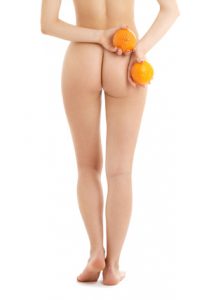
Although one can influence one’s body through exercise and dieting, there are always those problem zones that cannot be influenced. These problem areas are where liposuction can help.
In the 1970s, Dr. Giorgio Fischer in Rome, as well as Dr. Pierre Fournier and Dr. Yves Illouz in Paris began the evolutionary procedure of liposuction. In the 1980s further developments led to the “wet technology“ – where the extraction of the fat cells took place after injecting saline solution into the problem zones.
Before the surgery takes place, the problem zones are discussed and targeted, and the treated areas precisely drawn on the patient’s body. The marked area is then injected with a Tumescence solution through a special injection object which consists of multiple thin needles, that can evenly inject the solution into the fat cells in the problem zone. This is usually assisted by an anesthesiologist, who makes sure that the patient is sedated enough where he/she will not feel the pressure in the tissue, which can be very uncomfortable for the patient otherwise.
The Tumescence solution includes a local anesthetic, which is evenly distributed in the treatment area, making sure that there is absolutely no pain. Without sedation and with only local anesthesia, the patient can be actively treated, i.e. the patient can move from one side to another or lift their leg, making the surgery easier and more precise, and the surgeon’s job made easier. This is done in cases of smaller regions of liposuction, eliminating saddle-bags, liposuction in the areas of the knees, etc.
The process begins by making a small incision in the skin and inserting a small Liposuction Cannula. By moving in a crisscross motion, the cannula removes the fatty tissue mechanically. The solution that has been injected loosens up the fatty tissue, allowing easier removal of the fat cells. This also allows the nerves and vessels to move out of the cannula’s way, thus avoiding any injuries to these important structures. A modern „vibrating tube“, which is basically a cannula with a motor operated tip that moves very fast, back and forth, helps an easier release of the fat cells in the treated area. In the area closer to the skin’s surface, fine needles are used in order to avoid waves or dents forming in the skin (the Fine-tunneling method).
Therefore, a new contouring method can be done through a very sophisticated method and with optimal results, under the greatest possibility of protecting the nerves and the vessels. In this procedure, it is important to have a surgeon with profound experience and an aesthetic eye, as these are essential to achieve the harmony in proportions and natural lines. Along with a reasonable medical degree, your doctor should also have the “touch“ and the experience.
This procedure is usually outpatient, but if the procedure includes a bigger area, an overnight stay in the hospital is recommended. Even more so, if the patient lives alone or if he/she cannot be monitored on the first day after surgery. Immediately after surgery, compression pants or bodice is placed on the patient, which uniformly compresses the treated area and contributes to rapid healing. There is no significant pain after the procedure. There is some initial secretion of the solution from the wounds, as well as some initial swelling that retracts after a couple of days. Some discreet bruising will be present and will be reabsorbed by the body in a short time.
Sports should be avoided during the first weeks after procedure. After a few weeks the patient will begin to see the desired results, although the deeper tissue will further need to heal and repair itself – a process that can last up to three months but are not hindering in any way for the patient. Only in extreme cases does liposuction need to be accompanied with operational measures, i.e. skin lifting through excess skin removal.
| Duration of suregery: | 1-3 hours – outpatient, eventually 1 overnight | |
| Anasthesia: | Sedation and local anasthesia | |
| Time needed to return to daily routine: | 1-3 days | |
| Price: | depending on complexity – depending on the procedure | |
Please note that the costs of lipposuction include the surgery fees, anasthesiology (performed by an extra anasthesiologist or assistant), the nursing staff fees, the compression pants or bodice and the fee for the surgeon. The final price is determined once you have had a consultation with the doctor. During this time, your interests and possibilities will be discussed and an exact calculation can be done.

